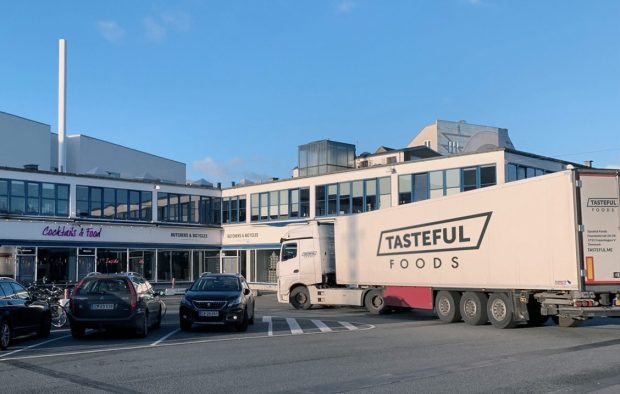Denmark’s Tasteful Foods CEO: Restaurant Business Is Our Biggest Competitor

“Every time a consumer decides to order a butter chicken via an app to be delivered to [his/her] house from a restaurant, the opportunity to sell rice and vegetables to the consumer disappears for the retailer.”
That statement by Anders Christensen highlights a twofold problem for Tasteful Foods, the company he oversees as CEO. On the one hand, the company’s plant-based products will be abandoned on supermarket shelves. On the other hand, its retail clients will risk being put out of business by restaurants.
The advantage the Denmark-based company has however, is operating in the Nordic region, where according to Christensen, eating less meat is becoming more and more popular, driven primarily by millennials who are increasingly leaning into a plant-based lifestyle.
That was what led to the launch of the brand’s plant-based portfolio, GRÖNT, six months ago, with products available in four Nordic countries — Denmark, Norway, Sweden and Finland — and currently in more than 3,000 grocery stores across the region.
That is a notable achievement given the short time frame, Christensen said.
“I’m not sure anyone else has done that in that period of time,” he said. “That actually makes us the fastest-growing plant-based brand in the Nordics.”
Up until then, the company supplied all the major Nordic retailers with a wide variety of convenience food products, ranging from meat salads and sandwiches to Italian and Asian ready meals and cheesecakes, all developed in collaboration with a team of gourmet chefs.
“[It’s] basically anything you can go into a supermarket and grab to eat right away or [that] you can take home, heat up and serve as a meal,” he told PYMNTS.
After seven years of operation, Tasteful Foods’ mission is simple, Christensen said: “The Nordics are our home market. This is where we want to be a strategic partner for the retailers and the food service operators when it comes to convenience food, a proactive partner who proactively develops the category for and with our customers.”
Converting Meat-Lovers to Plant-Based Alternatives
In order to get consumers to make the big shift to plant-based meals, Christensen said companies need to have three things: parity on taste, parity on texture and parity on price.
“When you can tick those three boxes, consumers will move to plant-based in a very big way,” he explained.
But few companies, even well-established brands, have mastered all three, he said, citing examples like U.S.-based firm Beyond Meat — whose plant-based products cost more than beef — and Sweden’s Oatly, which sells milk that is “two to three times more expensive than cow milk.”
This is where GRÖNT has an upper hand over competitors, he noted.
“We don’t want to be more expensive than a conventional ready meal, and we don’t want consumers to feel that they are compromising on taste and/or texture when they eat a plant-based meal,” he said.
Christensen said the company’s plant-based products are as competitive as the ones in Germany — the biggest plant-based market in Europe — which is the reason why it has decided to launch there early next year.
But expanding further south of Europe will have to wait, as countries like France, Spain, Portugal and Italy have a stronger food culture than the rest of the region and are less open to new tastes and trends in general.
He said he is optimistic however, because the plant-based trend is a global one, and despite the fact that market penetration will be higher in Northern Europe than in Southern Europe for some years to come, research shows that the south will eventually catch up.
Digitized Processes Payment Flows
Being a relatively young company means that digitizing Tasteful Foods’ systems and processes was done right from the start. This helped to reduce the impact on its business when the pandemic hit early last year, unlike other companies that were forced to quickly transition their payment processes from physical to digital in the midst of the crisis.
Working with major retailers also helped to soften the blow of the pandemic, as dealing with companies’ head offices was easier than working with smaller retailers, and previously built digital processes made the payment process easy.
That’s not to say it was all smooth sailing, Christensen pointed out, adding that it was a very stressful time when countries closed their borders to trucks, and workers were leaving factories to go back to their home countries.
The system has since “repaired itself,” and what the company has to keep an eye on now is the restaurant business, which is its biggest competitor, according to Christensen.
Plus, the growing number of third-party food and delivery aggregators that are helping to make restaurant purchases more convenient for consumers has only served to intensify competition further for both Tasteful Foods and its retail clients.
He said it’s no surprise because the trend has been gaining popularity for many years, even before the onset of the pandemic. According to Christensen, Denmark’s restaurant business has recorded growth of about 30% to 40% in the last five years alone, while retailers have had a flat sales development.
All is not lost, however, and the best way to tackle the issue is to team up with retailers to offer good alternatives to restaurant takeout in supermarkets, he said.
